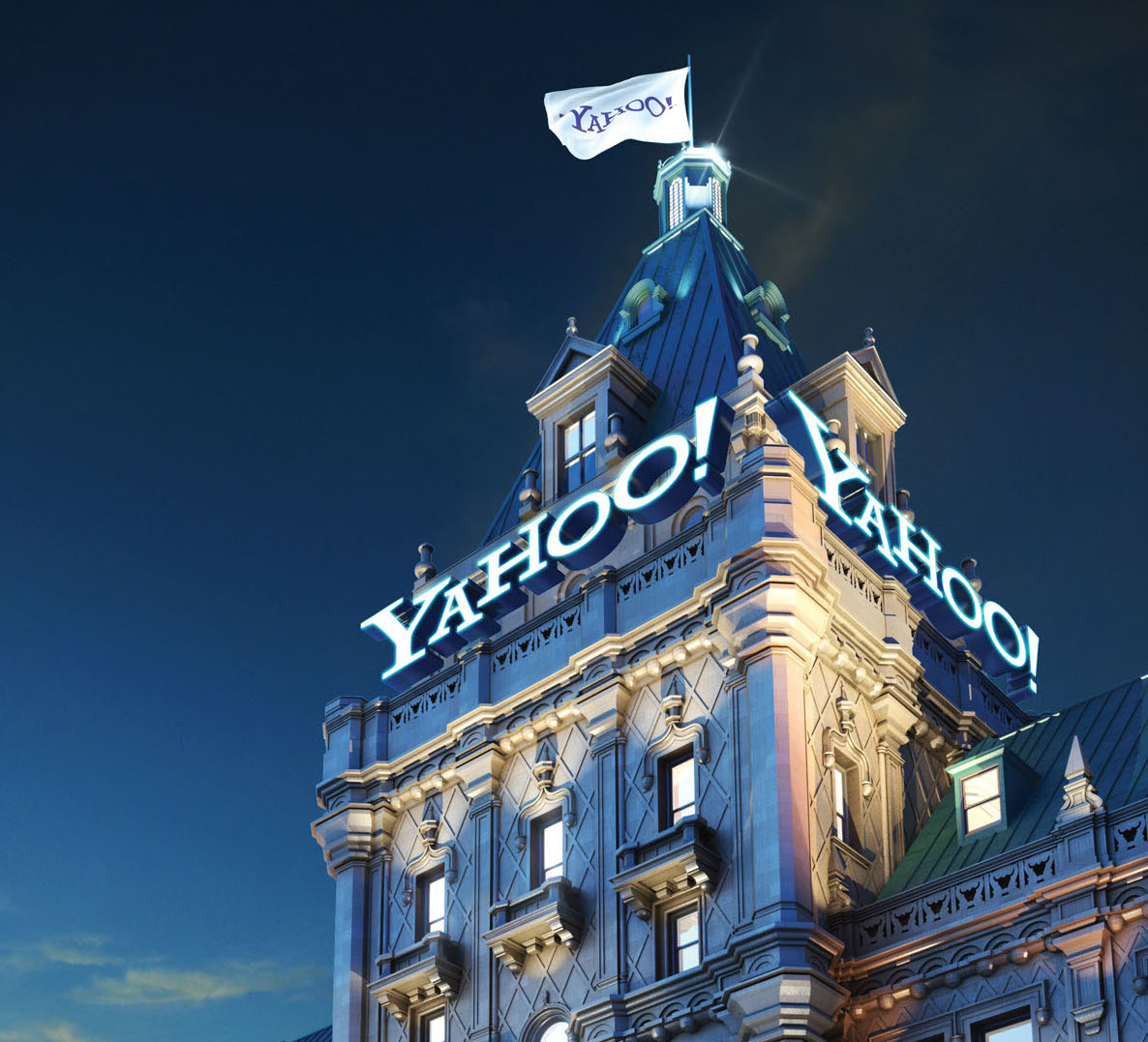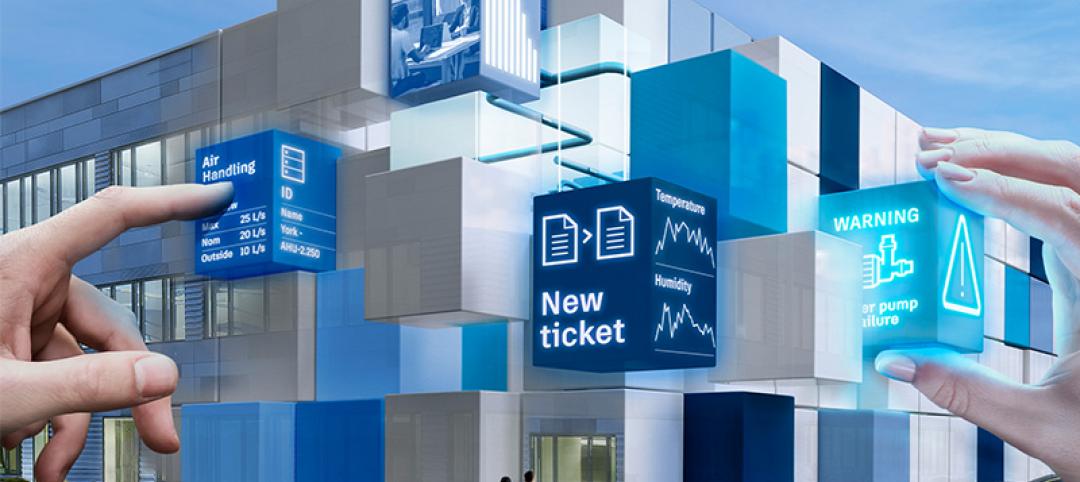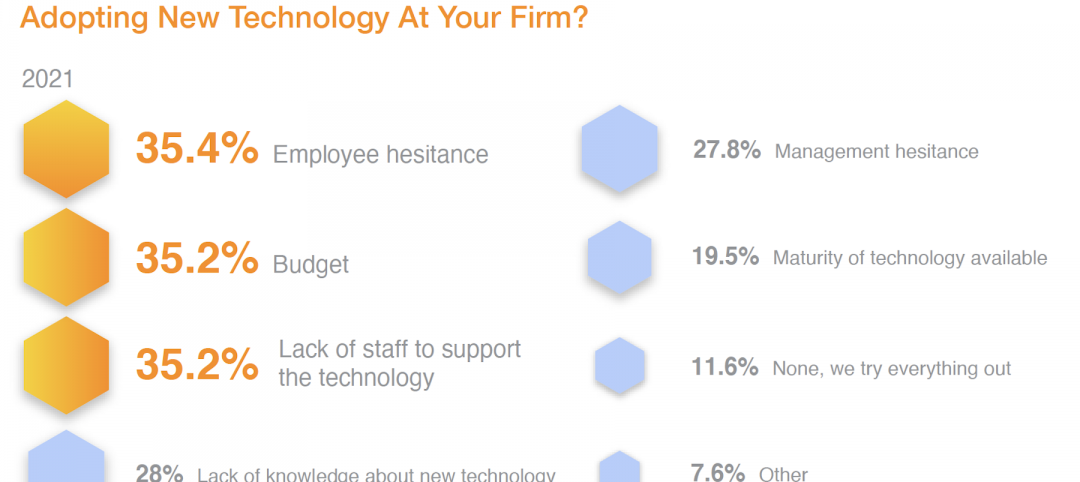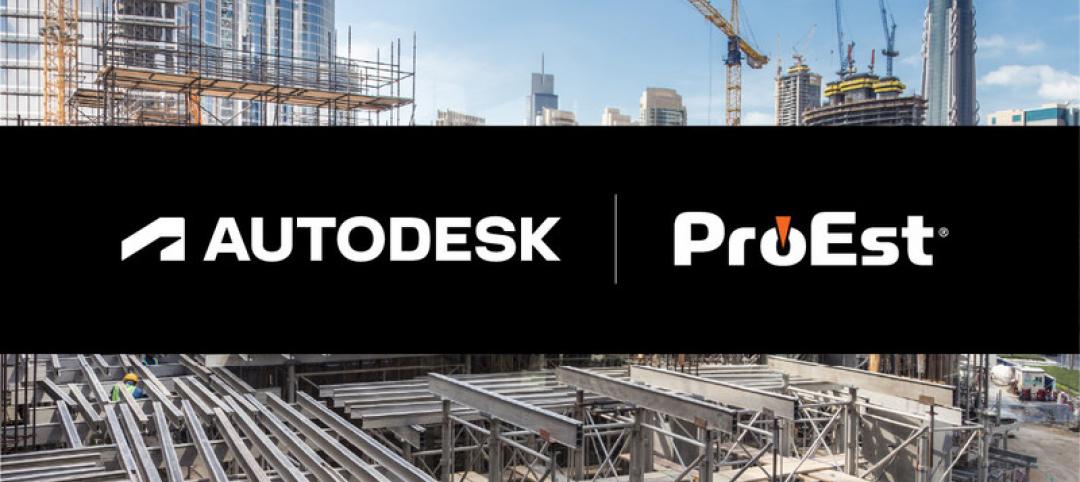In a world of advancing technology, virtual design is meant to look as real as a photograph but have the potential to tell a deeper, more meaningful story.
When well executed, renderings can be a powerful marketing tool. Increasingly, retailers such as IKEA, as well as real estate developers and architectural firms, are using photorealistic renderings—in lieu of photography—to market their products and services online.
The most important rule to follow when creating a rendering is to tell the right story. Who is your audience? What are you marketing? How can you best reach the audience through a rendering or computer-generated film? These questions need to be addressed before any computer wireframe or designs are put together.
What’s the real test of a great rendering? It’s photorealistic. It needs to look so similar to a photograph that it’s hard to tell what is real and what was designed on a computer.
5 tips for creating photorealistic renderings
1. Know the story you need to tell. Storytelling fundamentals—whether for books, movies, or branding—have not changed. The goal is to engage the audience and make them care about what you are saying. Understanding the client’s goals and expectations is the first step, and getting involved in planning meetings to understand the narrative is critical. The audience and the ideal tenant need to be established in order to frame the rendering.
Not everything can be accomplished in a conference room. Visit the project site to see what views the building will have (or has, if it is already built). Consider using a drone to capture aerial views and landscapes. Make sure to take into account the culture of the neighborhood. Site exploration will help the story resonate through the rendering.
2. Avoid a cookie-cutter approach. Having a process in place for rendering creation is important, but every project needs a clean slate to tell a specific story. Some firms make the mistake of having a template for what a condo tower or mixed-use development should look like. No design should be repeated. That’s when creativity, innovation, and the project’s unique story are lost.
3. Make it about more than digital design. A great rendering cannot be created from the mind of the digital artist alone. Consult with the architects, developers, and marketers to be a part of the strategy development and story creation processes. Architects understand that a rendering will sell their design. They can advise the digital artist on the building’s design and scale of the space. Developers understand how renderings tie into the overall brand strategy, and can help incorporate key points into the final artwork.
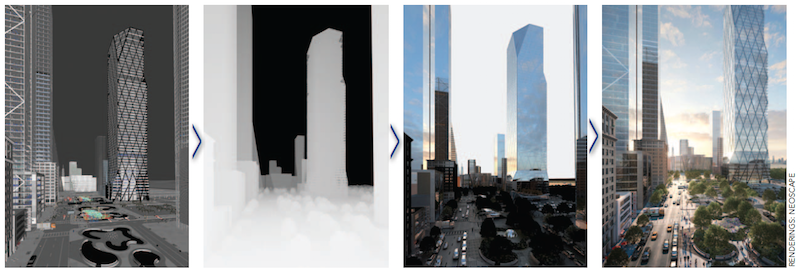 Rendering creation involves multiple steps: wire framing to help develop a good composition that tells an engaging story (far left); 3D render passes like Z depth (middle left) and reflection (middle right) to adjust the volume, hue, lighting, and reflectivity of elements; addition of details (people, sky) and color correction (far right).
Rendering creation involves multiple steps: wire framing to help develop a good composition that tells an engaging story (far left); 3D render passes like Z depth (middle left) and reflection (middle right) to adjust the volume, hue, lighting, and reflectivity of elements; addition of details (people, sky) and color correction (far right).
4. Add custom details. Composition, lighting, texture, color, time of day, angle of the sun or moon, even the choice of the lens for films, can make all the difference between a quality rendering and one that is truly lifelike.
Ask questions like, Will the building look better if presented in daylight, at dusk, or nighttime? Should the rendering incorporate people? If yes, what’s the demographic breakdown? For example, if you’re working on a rendering for an office building targeted at startup companies, the people in the rendering should not be wearing suits, and the workspaces should not include cubicles, but rather open, collaborative areas.
Going bold and adding the desired tenant’s name to the top of the building in a rendering can be the final piece to getting the company to sign the lease—as was the case with Yahoo at the 229 West 43rd Street project in Manhattan.
5. Experiment with new technology. As technology advances—especially real-time tools—people want new ways to tell their stories, or enhance a traditional experience. This is where virtual reality and augmented reality come into play.
In architecture and real estate development, virtual reality can provide depth and scale to renderings. Through the use of simple VR tools, such as Google Cardboard, a rendering can come to life. People can move through the space, under the impression that they have control. The rendering tells the story that the designer wants to tell and only allows certain views and spaces for exploration, but the user can decide where to turn and what to look at next. They make their own journey through the curated space.
The success or failure of project artwork doesn’t necessarily hinge on how photorealistic it is. Rather, it works best when the creator develops an effective, cohesive story that ties into the overall marketing strategy and delivers the brand’s narrative. That’s when the rendering comes to life in the viewer’s mind.
About the Author: Matthew Clarey is the New York office Art Director at Neoscape, a 20-year-old creative studio that specializes in artwork for the built environment. Clarey has worked as a 3D artist for more than a decade.
Related Stories
Digital Twin | Nov 21, 2022
An inside look at the airport industry's plan to develop a digital twin guidebook
Zoë Fisher, AIA explores how design strategies are changing the way we deliver and design projects in the post-pandemic world.
BAS and Security | Oct 19, 2022
The biggest cybersecurity threats in commercial real estate, and how to mitigate them
Coleman Wolf, Senior Security Systems Consultant with global engineering firm ESD, outlines the top-three cybersecurity threats to commercial and institutional building owners and property managers, and offers advice on how to deter and defend against hackers.
Sponsored | BIM and Information Technology | Jul 19, 2022
Why Autodesk Tandem is the best fit for your projects
Sponsored | Digital Twin | Jun 24, 2022
Pave the way for better business relationships with digital twins
Smart Buildings | Jun 1, 2022
Taking full advantage of smart building technology
Drew Deatherage of Crux Solutions discusses where owners and AEC firms could do better at optimizing smart technology in building design and operations.
AEC Tech | Apr 19, 2022
VDC maturity and the key to driving better, more predictable outcomes
While more stakeholders across the AEC value chain embrace the concept of virtual design and construction, what is driving the vastly different results that organizations achieve? The answer lies within an assessment of VDC maturity.
BIM and Information Technology | Mar 16, 2022
Construction still lags other industries in use of technology
JBKnowledge’s latest ConTech report asserts that while contractors have made some gains, too many don’t view IT as a priority, to their detriment.
AEC Tech | Dec 16, 2021
Autodesk to Acquire Cloud Based Estimating Company ProEst
Autodesk, Inc. is acquiring ProEst, a cloud-based estimating solution that enables construction teams to create estimates, perform digital takeoffs, generate detailed reports and proposals and manage bid-day processes. Autodesk plans to integrate ProEst with Autodesk Construction Cloud, a comprehensive construction management platform connecting teams, data and workflows across the entire building lifecycle.
Sponsored | BD+C University Course | Oct 15, 2021
7 game-changing trends in structural engineering
Here are seven key areas where innovation in structural engineering is driving evolution.


